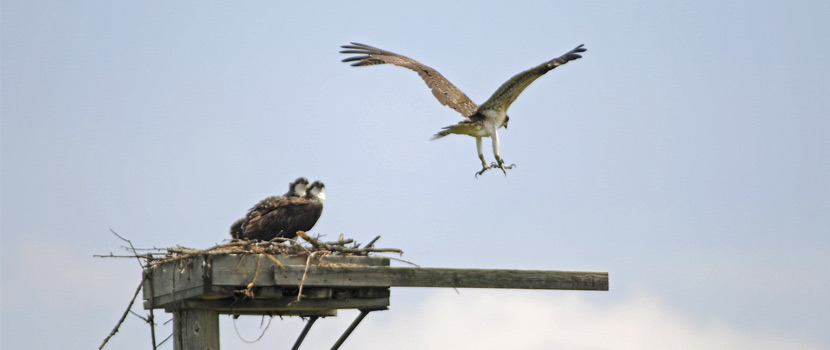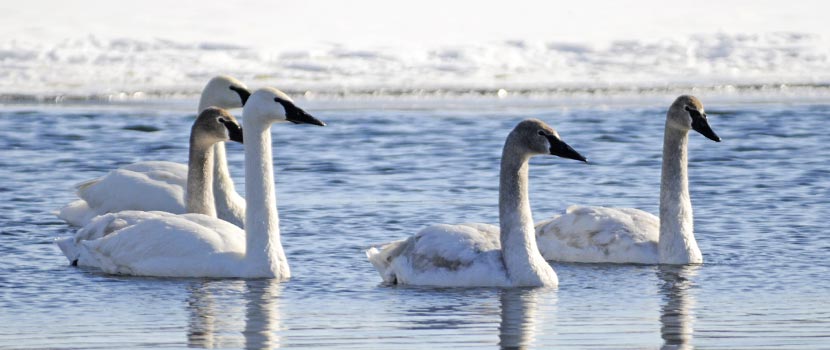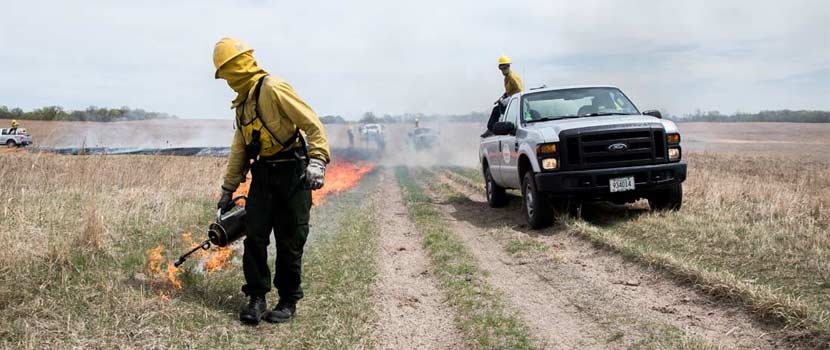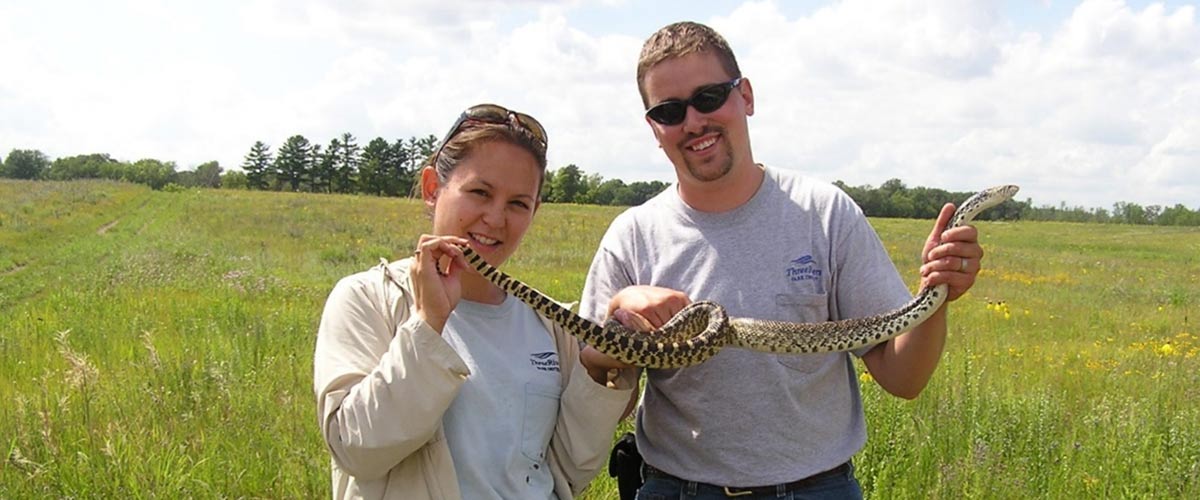
All About Bullsnakes — And How They Found A Home in Three Rivers
By: John Moriarty
July 01, 2019
Category: Resource Management
In 1991, Three Rivers began an ongoing effort to reintroduce bullsnakes, also known as gopher snakes, into Crow-Hassan Park Reserve. It took time, patience and careful record-keeping, but since then we’ve seen steady growth in the population.
If you read our post on species reintroduction, you know that we often choose to reintroduce a species that we can provide adequate habitat for, easily collect from another area, and that is likely to thrive in the long-term. Bullsnakes, a state-listed species of special concern that has become scarce in Minnesota, fit the bill.
In this post, learn all about bullsnakes, their habits and how to identify them, then find out more about how we reintroduced them into the prairie at Crow-Hassan and tracked their success.
Range
Bullsnakes range from western Wisconsin and Illinois south to Texas and west to the Pacific coast. In Minnesota, bullsnakes are found in the southern half of the state. Many records of bullsnakes in Minnesota come from counties bordering the Mississippi, Minnesota, and St. Croix Rivers.
Identifying Bullsnakes
Bullsnakes are the longest snakes in Minnesota, reaching a length of more than 6 feet. They are powerful, stout-bodied constrictors.
Bullsnakes have a yellow head that has many black or near-black markings, including a bold stripe from the eye to the corner of the mouth. They have prominent vertical lines on their upper lip, and their heads are pointed.
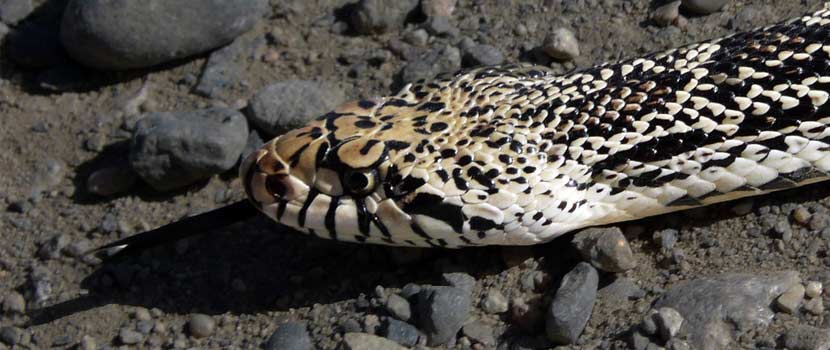
Their bodies are straw-yellow or light brown, with dark-brown or reddish-brown blotches down their backs. The blotched pattern is less obvious near the head but becomes bolder near the tail, which has black or reddish-brown bands.
The chin and belly are pale yellow, and the belly has several square or rectangular dark spots. Many individuals show a pronounced color change from head to tail.
The pattern of juvenile bullsnakes is similar to adults, but their overall color is lighter.
Habitat and Hibernation
Bullsnakes are snakes of open country. They prefers native prairies, old fields, pastures, oak savannas, and bluff prairies that are located on steep hillsides. Bullsnakes thrive in sandy-soil habitats where burrowing rodents are common.
Bullsnakes emerge from hibernation in late April or May. In the Twin Cities area they hibernate in gopher tunnels and other burrows that go below the frost line.
In the summer, bullsnakes use large areas of land. They have an average home range of 18 acres but can use over 500 acres during their active season: late spring and summer. Some snakes travel over 1.5 miles during the summer.
They are mostly diurnal – meaning they are active during the day. Bullsnakes can climb, but they spend most of their time foraging and resting in rodent burrows. They are fond of basking on warm sand, rock, or pavement. Their active season generally ends in late September or early October.
What Do They Eat?
Bullsnakes are constrictors that eat gophers and a variety of other small mammals, including mice, voles, ground squirrels, and tree squirrels. Other prey include frogs, ground-nesting birds, and bird eggs. Bullsnakes are at risk when trying to subdue a large rodent, and may be badly bitten or, in rare instances, killed in the process.
Bullsnakes are extremely beneficial predators, eliminating numerous pocket gophers and ground squirrels. Landowners battling rodent populations in croplands or grasslands benefit from having snakes nearby. Killing even one snake will benefit the rodents.
Mating and Hatchlings
Bullsnakes mate in May. In June or early July, females lay a single clutch of three to 24 eggs (average of 12) in a self-dug nest. The nest may be out in the open or under a large rock or log in loose, sandy soil. Communal nests have been reported, but they are not common.
The whitish eggs have rough, leathery shells and average 1½ by 2 inches. Eggs grow in width and mass during the development period.
Eggs take about 60 days to hatch. Hatchlings are typically 10 to 17 inches long. They shed their skin for the first time at 7 to 10 days of age.
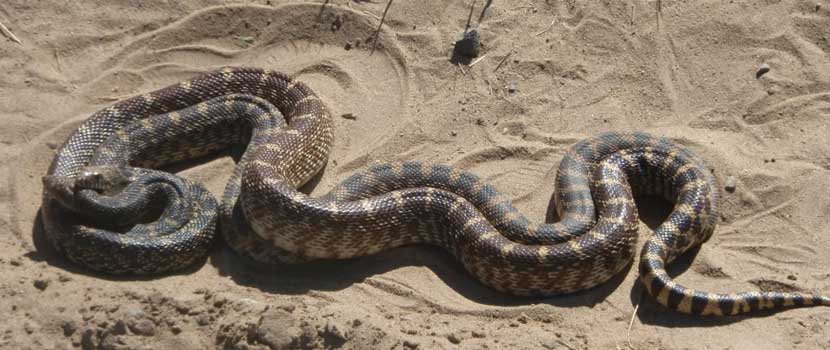
What Happens if You See A Bullsnake In The Wild?
When encountered in the wild, bullsnakes make every attempt to escape, often diving for the first available burrow. If left without a retreat, they can put on an impressive display of fierceness.
An agitated bullsnake coils up, rapidly vibrates its tail, hisses loudly, and strikes repeatedly. In dry leaves, the vibrating tail makes a sound similar to a rattlesnake. No other snake in Minnesota can hiss as loud as a bullsnake. Although nonvenomous, a large adult can deliver a painful bite.
If you come across a bullsnake, the best thing to do is keep your distance and leave it be. Bullsnakes won’t chase or follow you.
Do Bullsnakes Have Predators?
Adult bullsnakes don’t have many predators, but a large hawk or predatory animal may occasionally take one. Young snakes fall prey to birds, mammals, and other snakes.
Unfortunately, road traffic and habitat destruction are far greater threats to bullsnakes. Many snakes are also needlessly destroyed by humans due to fear and misinformation.
The Minnesota Department of Natural Resources classifies bullsnakes as a species of Special Concern and lists it as a Species of Greatest Conservation Need.
Reintroducing Bullsnakes at Crow-Hassan Park Reserve
In 1991, Three Rivers conducted an initial search for bullsnakes in Crow-Hassan Park Reserve. Six park staff spent over 100 hours in the park that June and did not see one bullsnake.
Knowing that Crow-Hassan had an ideal habitat for bullsnakes, we decided to reintroduce them into the park.
1991-95 Reintroductions
Nine bullsnakes were collected from Sherburne National Wildlife Refuge 25 miles north of Crow-Hassan. They were released into Crow-Hassan in June 1991. Prior to release, six of the snakes were implanted with radio transmitters.
The radioed snakes were first relocated the day after their release. That year, we recorded 162 relocations. There were only two sightings of bullsnakes outside of relocation attempts. The furthest a snake moved away from the release site was a straight line of over 1 mile. The non-radioed snakes were never recaptured.
Between 1993 and 1995, an additional 36 snakes (29 captive-born hatchlings and seven adults) were added to Crow-Hassan.
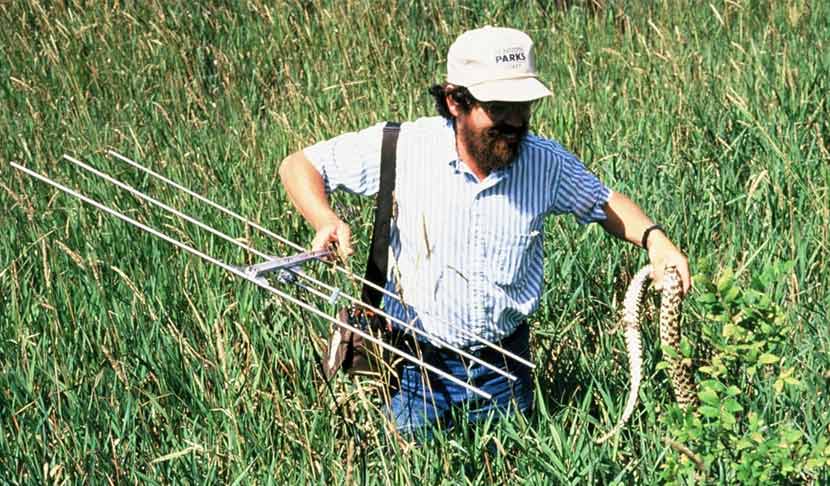
1995 to 2013 Sightings
From 1995-2013, average annual bullsnake sightings gradually increased:
- 1995-2000: less than one sighting per year
- 2000-2009: three sightings per year
- 2010-2013: six sightings per year
While sightings have been limited overall, they show the presence and growth of the bullsnake population.
How Are Bullsnakes Doing Now?
Starting in the summer of 2014, Natural Resources staff has been catching bullsnakes in Crow-Hassan as they came across them while conducting other work, like bird surveys, weed control and seed collecting. We mark the snakes with the same tags used by veterinarians to “chip” dogs and cats.
A total of 128 adult bullsnakes – 75 females and 52 males – have been caught to date. Only 27 of the marked snakes have been re-caught. Several hundred hatchlings have been caught, but they were not marked or processed.
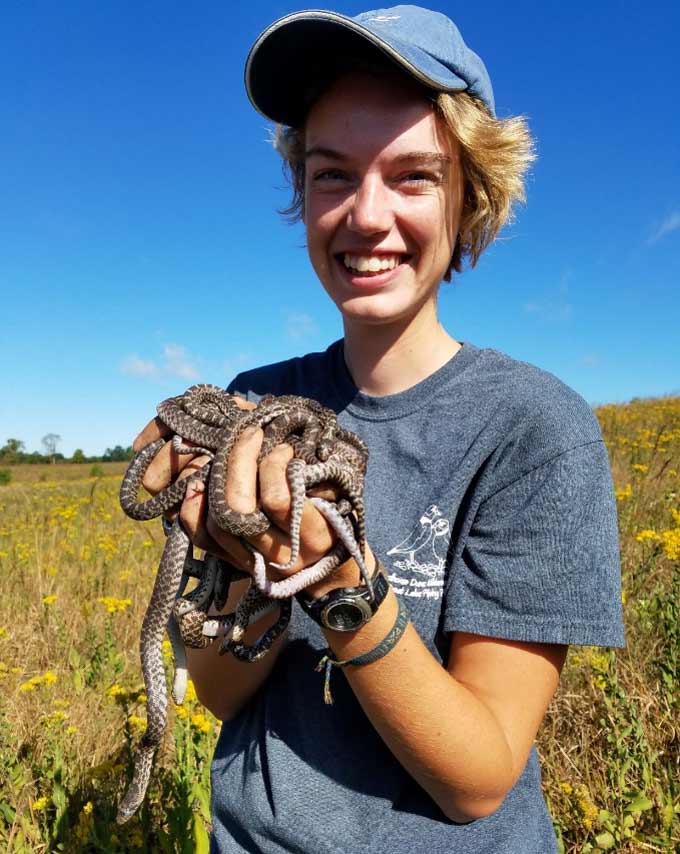
We also found four snakes that had been killed on the roads bordering the park in the last two years, indicating that they have expanded beyond the park.
In late June 2017, we captured 32 pregnant female bullsnakes over the span of four days in a ½-acre area of the prairie. Communal nesting by bullsnakes has been reported in other parts of their range with the number of females in one nest ranging from three to 15.
Restoring and growing the population of a reintroduced species can take time, effort and patience. The pay off, however, is worth it. After more than 20 years, bullsnakes are now regularly observed at Crow-Hassan. No other areas have matched the density found there.
Learn something in this post? Scroll down to subscribe to be the first to know about new blog posts!
Archive image credit: "Bullsnake - Pituophis catenifer sayi" by smalleraperture is licensed under CC BY-NC-SA 2.0.
About the Author
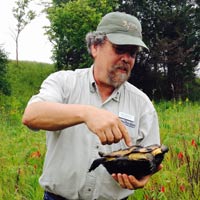
John Moriarty is the Senior Manager of Wildlife at Three Rivers Park District and has been with the Park District for 15 years. He has been involved in many of the wildlife restoration efforts and initiated the snake and butterfly efforts. John has led several projects to increase prairie habitat in the Park District. John likes exploring natural areas and looking for all types of plants and animals, but especially turtles.
Related Blog Posts
Osprey Reintroduction: The Great Success Story
By: Steven Hogg
Ospreys used to be very common in southern Minnesota, but they disappeared from the Twin Cities after World World II. Learn about the program to bring these amazing birds back and how wildlife can survive in an urban area when given the right tools for success.
Reintroducing Wildlife at Three Rivers
By: John Moriarty
What do trumpeter swans, regal fritillary butterflies and bullsnakes have in common? All were reintroduced into Three Rivers parks. Read about what goes into reintroducing a species and discover what others were successfully reintroduced — some might surprise you!
Prairie Burns: Protecting Precious Habitat with Fire
By: Erin Korsmo
Three Rivers conducts controlled burns at its prairies each spring. Learn what goes into burning a prairie and why fire is so important to preserving this special habitat.
